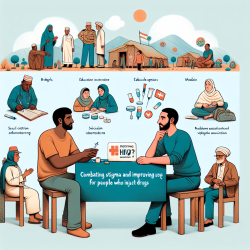As practitioners committed to creating positive outcomes for children, it is crucial to stay informed about the latest research and its practical applications. One recent study, "Salivary oxytocin in autistic patients and in patients with intellectual disability," offers valuable insights that can enhance our understanding and intervention strategies for children with autism spectrum disorder (ASD) and intellectual disability (ID).
Oxytocin (OT), often dubbed the "love hormone," has been extensively studied for its role in social bonding and behavior. The study in question assessed the correlation between salivary OT levels and age-related and psychopathological symptoms in children with ASD and ID. The findings are compelling and can inform our therapeutic approaches.
Key Findings
- Children with ASD and ID had significantly lower salivary OT levels compared to those with ID but without ASD.
- There was a direct correlation between high OT levels and the severity of ASD symptoms, as measured by the Childhood Autism Rating Scale (CARS).
- No significant correlation was found between OT levels and intellectual development in children with ASD and ID, whereas a relationship was observed in children with ID but without ASD.
Implications for Practitioners
These findings highlight the potential of OT as a biomarker for ASD severity, which could be instrumental in tailoring interventions. Here are some practical steps practitioners can take:
1. Consider OT Levels in Assessments
Incorporate OT level assessments into your diagnostic protocols. Understanding a child's OT levels can provide additional context to their social and behavioral challenges, allowing for more targeted interventions.
2. Tailor Interventions Based on OT Levels
For children with low OT levels and severe ASD symptoms, consider interventions that may help boost OT, such as parent-child interaction therapies. These interventions have shown promise in increasing OT levels and improving social behaviors.
3. Advocate for Further Research
Encourage ongoing research into the role of OT in ASD and ID. The study suggests that OT levels could serve as a diagnostic marker and potentially guide treatment strategies. Supporting research initiatives can contribute to a more robust understanding and better outcomes for children.
Encouraging Further Research
While the findings are promising, they also underscore the need for further research. Specifically, more extensive studies with larger cohorts and diverse populations are necessary to validate and expand upon these results. Practitioners can play a vital role by participating in and advocating for such research.
To read the original research paper, please follow this link: Salivary oxytocin in autistic patients and in patients with intellectual disability.










